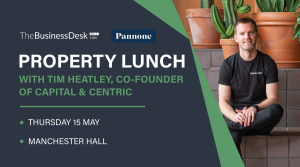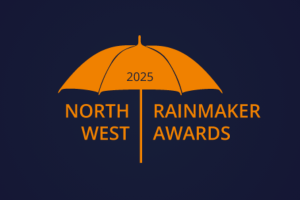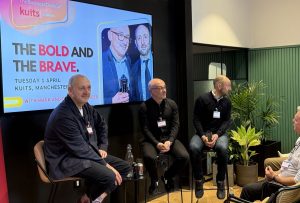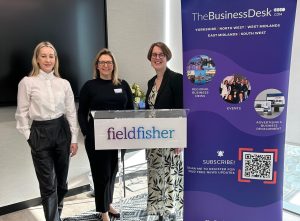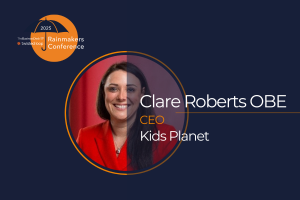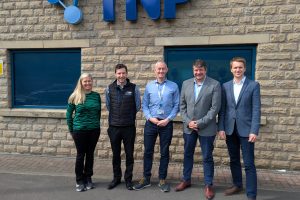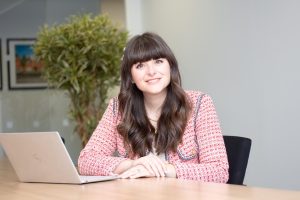Drivers of transformation and the future of work

In a roundtable discussion held in Liverpool with Grant Thornton we wanted to look at the future of work.
In particular, how it was related to transformation and therefore to explore the constantly evolving environment of flexible and hybrid working. We touched on how businesses are thinking about how best to use technology, and how this might impact on workforce strategy and most importantly; how you can make transformation successful.
Tania Ellery from System C – who has been involved in change programmes all her professional life has never known a time like it. She said: “I come out of a kind of Wolf of Wall Street investment banking toughness. But this is bonkers, right? Change fatigue is actually a very real thing.”
She said major business leaders are constantly having to question every single thing they do and turn the Rubik’s Cube around to say, “Can we do this better? How do we need to be more sensitive?”
System C has moved from Warrington to Liverpool which she described. “We do have a lot of home workers, but the collaboration needs to come back. Especially for the junior talent, whether it’s a fresh graduate, or in their first three to five years, it’s really interesting to land them as a new joiner in your organisation, but in a remote setting? That’s a hell of a thing. I think it’s flipping hard when they’re in the office environment with you to see whether or not you roll the dice the right way.”
Ben Butterfield, Associate Director in the Business Consulting team at Grant Thornton, has worked on many change programmes and helps clients adapt to new ways of working: “From a tactical point of view, many organisations were able to get online and continue working out of necessity. The hard bit is changing work cultures for what has followed. It’s about promoting different work culture attributes, particularly around collaboration, trust, and recognition.”
In his experience at private health insurer Medicash, Andy Roberts said the digital journey had been quite extensive, transitioning from cash plans and posting receipts in the mail to everything now operating on an App.
“A lot of verification is done of the claim that a human would have previously done,” he said. “It’s being done in real time and just drops into our system, so we can just quickly log in and just pay or decline straightaway – and we do pay over 95% of them!”
But, he added: “We have lots of digital health benefits too, we use “skin vision”, where you take a picture of your moles, to check whether something is potentially cancerous. We have a digital physio triage service, a virtual GP service so the key for us has been how do we integrate them all within one app. It’s sort of using API integrations and those kinds of things to make it kind of simple, everything can be just accessed from one place.”
Professor Janet Hemingway similarly said her organisation needs to have people in laboratories: “We’re in a mix, because we’ve obviously got a lot of lab based activity, and you can’t do that remotely. And so we’ve got a dichotomy of the people working within the teams, a lot of those who are in the office space, and have virtual platforms so they can work from home, and those who are in the lab can’t do that.
“So we try and make sure that even the people who could work virtually all the time, don’t, and that they come in, and work two or three days in the same space as everybody else. And that gets the teams working together.
“The people who come and work for us largely are doing it because they get out of bed in the morning because they want to help,” she said.
Zoe Wallace at Agent Marketing has an all-in culture and said anything else just isn’t conducive to working together in person. “We put our flag in the sand early days to say we want to be together, we want a culture where we come to work, especially with our younger people, we’ve had people who were relocated to Liverpool, and want to make friends in person,” she said..
“More broadly, the worry is and I think there’s a ticking time bomb where we won’t know what the impact of not having junior colleagues in the office is going to be probably for another few years. Potentially we’ll turn around and go ‘where’s the capable talent? We haven’t we developed enough people?’”
Gareth Hitchmough is an Audit Partner at Grant Thornton, he said: “As a firm, we’ve got lots of different service lines that work in different ways. Audit is client facing, which means we spent time with our clients all the time, and we continue to flex around their needs and put them at the forefront of our plans.
“Like Tania said, we have said to our audit teams we would like you to be working together as a team, whether at client premises or the office for around four days a week.
“We’ve got good attendance rates in the Liverpool office, and some of this is the city centre location which gives people the ability to meet up and spend time together. The social aspect of any office is the glue that binds an office together and it’s really important to not lose sight of those aspects.”
Lesley Dixon, chief executive of PSP said: “We went out to our people that could work flexibly and asked them what they wanted to do. And basically, the consensus came around at least 40% of the time in the office, and people can spend more time if people want to be there more. They absolutely can. But we say at least 40% of the time in the office, or we have them as their team members and work in our shared life service who are out and about visiting clients.”
It was useful to get a perspective on the property side. Leanne Katsande, head of commercial at Sciontec thinks deeply about how to make the workspaces conducive to a different and transformative way of working. “We found that the setting that we’ve got now, people want to enjoy a great workspace. I mean, the spine of it speaks for itself, doesn’t it? We took two floors of the Spine to offer serviced office on a by desk basis because we found that’s where the market has gone. After lockdown people just wanted that flexibility, really just you know, a one desk to desk, they want to tie in to any long term search that was really popular. What I found now is it’s gone full circle.”

